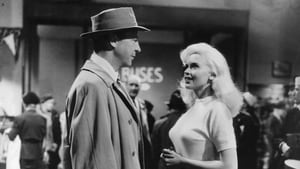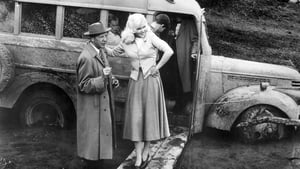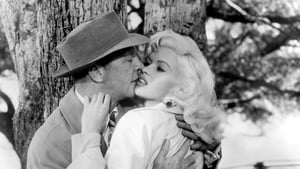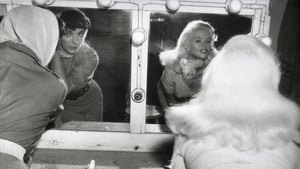Video Sources 0 Views
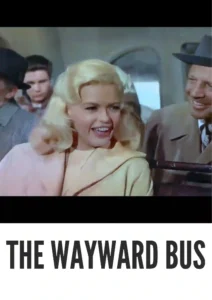
Download The Wayward Bus (1957) Colorized HD | Jayne Mansfield | Offbeat Drama
Synopsis

Embark on a quirky journey with The Wayward Bus, a thought-provoking drama from 1957, now beautifully colorized for a captivating viewing experience. Featuring a stellar cast and directed with nuanced understanding, this film explores the lives of diverse characters whose paths converge on a fateful bus trip through California’s Salinas Valley. Perfect for fans of character-driven stories and those seeking a different cinematic experience, this HD download offers a unique and timeless exploration of the human condition.
The Wayward Bus tells the story of a group of travelers whose lives intersect on a dilapidated bus journeying from Rebel Corners to San Juan. The bus, driven by the ruggedly independent Johnny Chicoy (Rick Jason), becomes a microcosm of society as it navigates the challenges of a washed-out road and the personal dramas of its passengers.
Among the passengers are Camille Oaks (Jayne Mansfield), a burlesque performer seeking a fresh start; Ernest Pritchard (Dan Dailey), a traveling salesman with a penchant for alcohol; and Norma (Joan Collins), a disillusioned young woman running away from her past. As the bus encounters one obstacle after another, the passengers are forced to confront their own desires, fears, and prejudices. Through humor, pathos, and unexpected twists, The Wayward Bus offers a poignant reflection on the human experience. The film culminates in a symbolic journey of self-discovery and acceptance, highlighting the resilience of the human spirit. Ultimately, The Wayward Bus is a compelling drama that invites viewers to contemplate the complexities of life’s journey.
The film boasts a talented ensemble cast who bring depth and authenticity to their respective roles:
-
Rick Jason as Johnny Chicoy
-
Jayne Mansfield as Camille Oaks
-
Joan Collins as Norma
-
Dan Dailey as Ernest Pritchard
-
Dolores Michaels as Alice Chicoy
The Wayward Bus transcends traditional genre classifications, blending elements of drama, comedy, and social commentary. Its focus on character development and exploration of complex themes sets it apart as a unique and thought-provoking cinematic experience.
Released in 1957, The Wayward Bus reflects the changing social landscape of post-war America. Themes of alienation, disillusionment, and the search for meaning resonate with the anxieties and aspirations of a generation grappling with rapid social and cultural shifts. The film’s frank portrayal of sexuality and its exploration of unconventional relationships challenged the conservative norms of the era, making it a notable work of its time.
This colorized version of The Wayward Bus has been meticulously restored using state-of-the-art digital techniques, enhancing the visual impact while remaining true to the film’s original narrative. The colorization process involved careful analysis of the original black and white footage, with attention to detail in replicating the costumes, scenery, and overall atmosphere of the film. This painstaking process enhances the viewing experience, bringing new life to the characters and their surroundings.
-
: Victor Vicas
-
: Ivan Moffat
-
: the novel by John Steinbeck
-
: Ernest Laszlo
-
: Louis R. Loeffler
-
: Twentieth Century Fox
-
: Twentieth Century Fox
-
: 90 minutes
-
: MP4
-
: HD (1080p)
-
: Compatible with most devices, including smartphones, tablets, computers, and smart TVs.
The Wayward Bus (1957) has garnered attention for its ensemble cast, its bold exploration of social themes, and its unique blend of drama and comedy. While opinions on the film may vary, it remains a significant work in the careers of its stars and a compelling example of mid-century American cinema. As a thought-provoking and visually stunning film, The Wayward Bus continues to resonate with audiences today.
-
: What is The Wayward Bus about?
-
A: The Wayward Bus is a drama about a group of travelers whose lives intersect on a bus journey through California’s Salinas Valley.
-
-
: Is The Wayward Bus (1957) a well-known film?
-
A: While not as widely recognized as some classic films, The Wayward Bus is known for its ensemble cast and its exploration of social themes.
-
-
: Is this version of The Wayward Bus colorized?
-
A: Yes, this version has been professionally colorized to enhance the viewing experience.
-
-
: What makes The Wayward Bus interesting for classic film fans?
-
A: The Wayward Bus offers a glimpse into mid-century American society, showcasing the talents of its cast and its unique storytelling approach.
-
-
: What is the download format?
-
A: The download format is MP4, which is compatible with most devices.
-
-
: What resolution is the download?
-
A: The resolution is HD (1080p), providing a high-quality viewing experience.
-
Watch The Wayward Bus Today!
